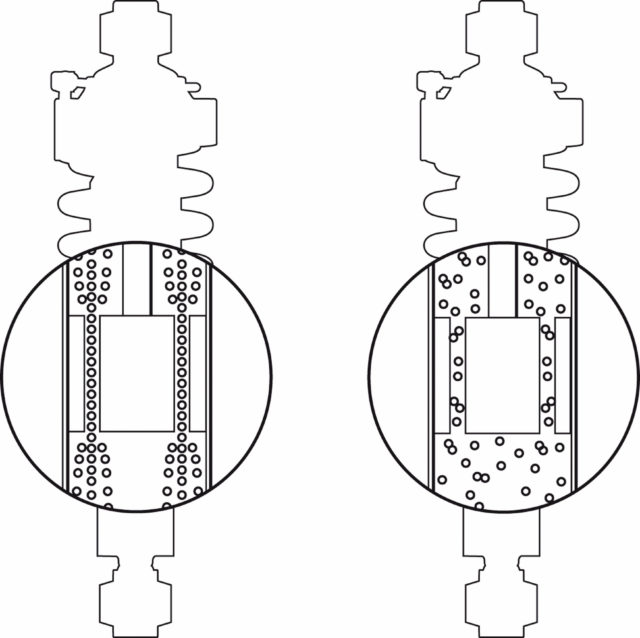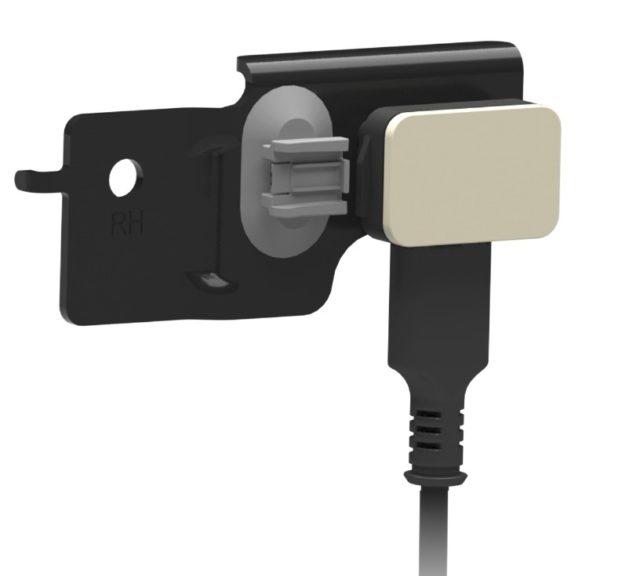by Dean Law, Law’s Automotive
Magnetic Ride Control, or MagneRide, has been around since the early 2000s, but it is found today on everything from the Chevy Camaro to a whole list of SUVs, both from GM and other makes.

Portage La Prairie, Man.
lawsauto@yahoo.ca

The units are built fairly well. I remember, even in the beginning, it was causing a lot of problems in the diagnostic areas. Not too many people were really picking up on it, but it was pretty much straightforward.
The technology is based on the properties of magnetorheological fluid – that’s a mouthful, right! – which changes its structure when you apply a magnetic charge.
The shocks are filled with a fluid that is a mixture of easily magnetized iron particles in a synthetic hydrocarbon oil. Each monotube damper contains a piston with two electromagnetic coils, and two small fluid passages through the piston. The electromagnets are capable of creating a variable magnetic field across the fluid passages.
When there is no current (that is, magnetic field) applied to the coils, the fluid flows freely; when a current is applied, the magnetic force causes the fluid to increase its effective viscosity so it can’t flow so freely, resulting in a stiffer ride. Altering the strength of the current results in a nearly instantaneous change in force of the piston.

As the system has developed over the years, so has the control mechanism.
In 2020, Cadillac introduced the fourth generation of Magnetic Ride Control (MagneRide 4.0) with up to 45% faster damping response.

- New wheel hub accelerometers and an inertial measurement unit transmit and process changes in road conditions four times faster than the previous system, for more fluid and natural-feeling damping changes.
- The inertial measurement unit provides more precise measurements of body motion relative to the wheels, for more accurate readings under heavy braking, hard cornering and other driving conditions.
- New secondary temperature maps enable engineers to compensate for changes in damper fluid temperature, which contributes to more consistent performance, especially during performance driving.
- New magnetic flux control creates a more consistent and more accurate transition between rebound and compression in the dampers, improving the system’s ability to sense and control vehicle body movement.
- A significant reduction in damper friction produces a near “no damping” effect that enables engineers to tune for more pronounced differences between drive modes.
- Upgrades to hardware and software improve transient body control to allow the vehicle to remain more level as it transitions between corners.
- A new magnetorheological fluid formula reduces friction within the damper that contributes to smoother overall damping.
All of which means they’re looking to get even tougher to diagnose when things go wrong.
And while GM advised replacing all shocks as a warranty item, in the aftermarket world, failed units are usually a one-off.
These units have been known to suffer from leakage and other failures, sometimes from outright abuse. (Who takes their Cadillac offroading?)
But the advisory from GM on these is to replace only the failed unit, which may seem counter to advisories and common practice on conventional units, which is to replace ride control in pairs (at least).
According to GM Tech Link, the shocks/struts are designed and intended to operate independently of each other and should be serviced individually to avoid unnecessary repairs. If only one shock or strut has been found to be the cause of a suspension condition, only the shock or strut that has failed should be replaced.
Shocks/struts should only be replaced as a pair if diagnosis shows that both components have failed.
To get there, you are going to have to have good diagnostic skills. I’ve been seeing a lot more problems with mechanics today trying to diagnose something that they just don’t comprehend.
I see so many people just saying, “Ah, don’t worry about it. I’m not into all those fancy computers. Don’t waste your time on that. It’s just that these are the common problems with these things.” Well, ease up on that “common problems” approach; that is where a lot of people get burned.
Get yourself familiar with wire diagrams, schematics and control. Really – I can’t emphasize that enough. Get to know what it is: power side switch, or is it ground side switch? What’s controlling it? Get to really know that stuff, the nuts and bolts of it. If you don’t know how it works, you just can’t diagnose it. You would be looking at the wrong thing.
And get an oscilloscope. Even if you don’t know how to use it, grab it and start using it. And then look at every vehicle that’s coming into your bay.
Back in 2015, GM issued an advisory campaign to address complaints of a harsh ride right out of the box on some models. GM advised using the vibration analyzer CH-51450-A (Pico Oscilloscope), driving the vehicle at a 55-85 kph range on the same section of road for each stage of evaluation. The Pico scope will normally show this ride condition as a Tire 2 or Unknown vibration (approximately 15-19 Hz) in response to small/minor road imperfections/bumps.
Get to know what normal readings are. Find out how this thing works. Start bouncing it and see what changes in the readings. Look at the body control module or the ride control module, and back probe those pins. Find out what the bias voltages are. Understand how those potentiometers and pressure sensors react.
With the Magneride, or magnetic ride control, as with everything else that’s coming out, if you don’t know it now, it’s not time to procrastinate. It’s time to pick up that scope and just start using it.


0 Comments